Convict Clothing Part 3.
Tailoring as rehabilitation
Things were grim for the First Fleeters, convicts and soldiers alike. They were traveling across the oceans to a country totally alien to their experience, with no supplies except that which they brought with them or managed to gather from the land. England was a long way in both distance and time if emergencies or hardships occurred. Around 1400 people arrived in Port Jackson with only 117 live stock. Captain Arthur Phillip shouldered a heavy responsibility to keep the people alive. When famine threatened, he had the soldiers fish constantly for food and gave up his private provisions for the benefit of all.
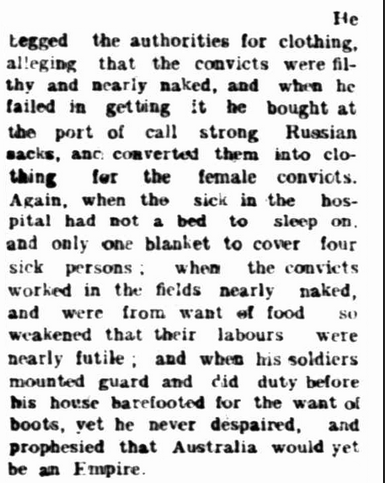
Fitzroy City Press (Vic), 20th January 1911 page 3.
The initial main focus on clothing was for decency and health. The convicts wore what they arrived in, or were lucky enough to bring, nothing else being available. If they had extra, they could sell the pieces for a tidy profit. Later, when clothing was supplied, it could be an integral part of the punishment (i.e. the parti-coloured clothing and completely yellow uniforms; yellow being the colour of humiliation). However, there was also the potential for rehabilitation, for learning a useful trade, and even for the government to profit from the enforced labour.
“Well behaved” female prisoners were allocated as servants and house keepers. Those newly arrived, or unsuitable for domestic work were, from 1804, set to work weaving cloth including woollen fabric, sackcloth, linen, sail cloth and hemp at the Parramatta Female Factory. It became overcrowded and lacked proper facilities. In 1822 a new female factory was opened. After 1815 “Parramatta cloth” was of good enough quality to be exported.
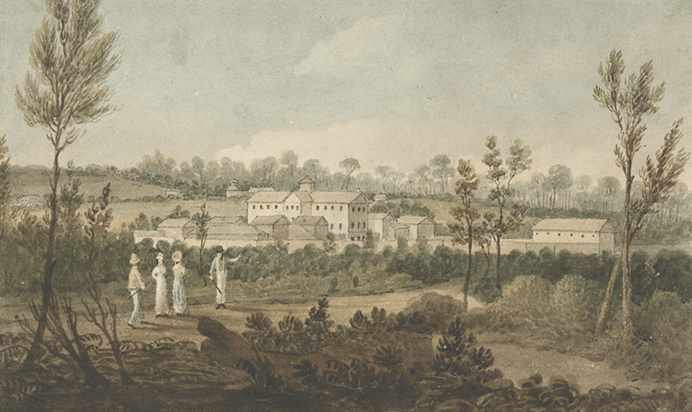
National Library: Painting of the Parramatta Factory c.1826.
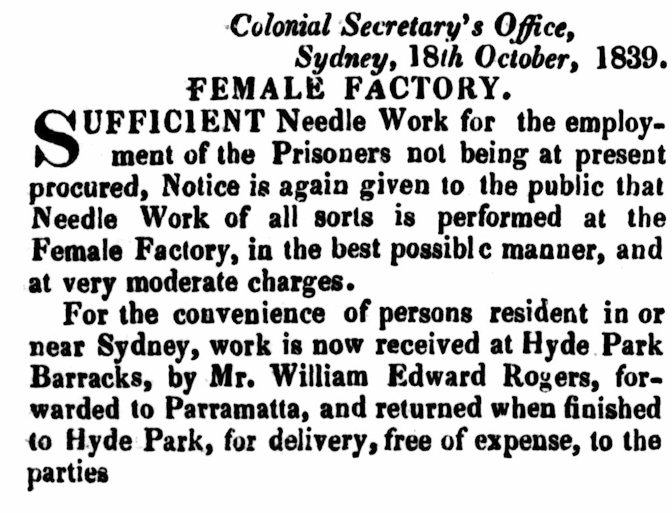
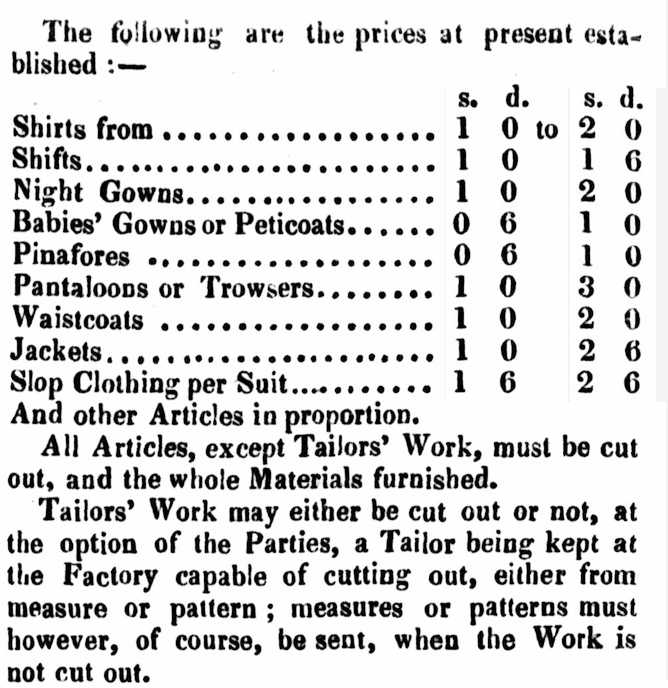
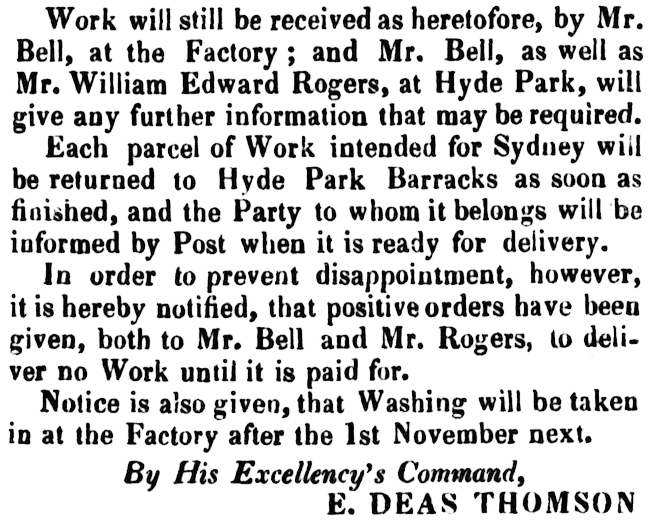
NSW Government Gazette, 25th March 1840 page 282.
https://atparramatta.com/discover/history-and-heritage/historical-places/parramatta-female-factory
There was established in Van Diemen’s Land in 1843 an “Institute for the Reformation of Female Convicts”. A Mrs Bowden, with support from the government, had set the wheels in motion:
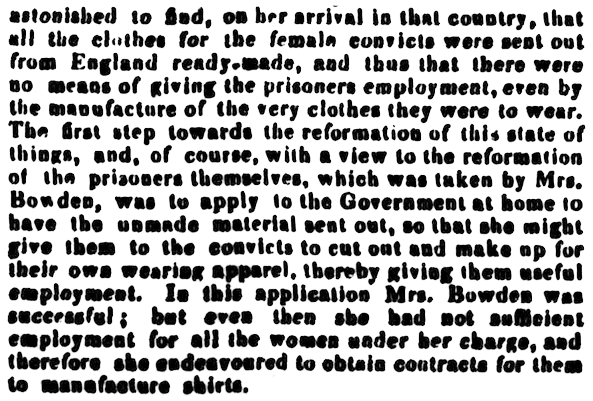
The Courier (Hobart)), 18th September 1847 page 2.
In Tasmania, male convict tailors were set to work repairing convict garments supplied from England, although after the 1850s they were making uniform items with (mostly) imported cloth.
For all comments and queries, please use the Contact page
